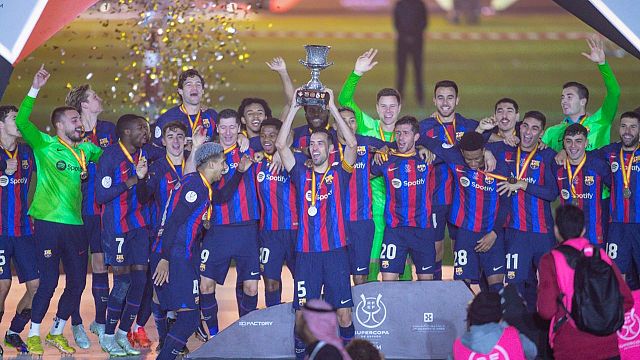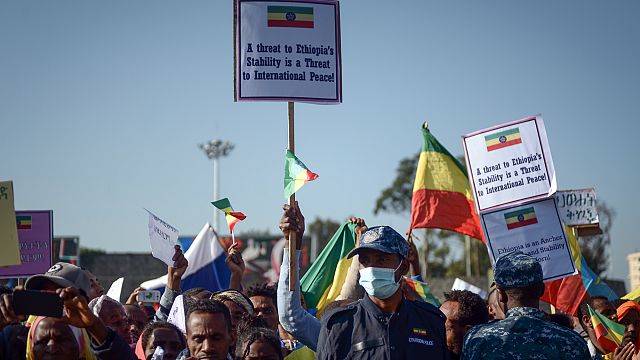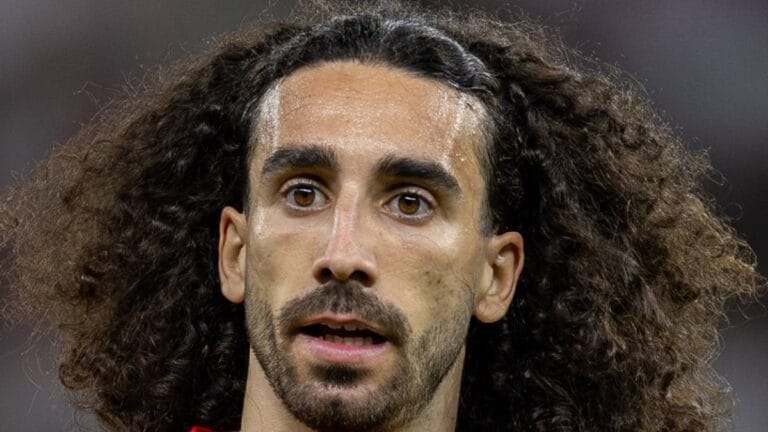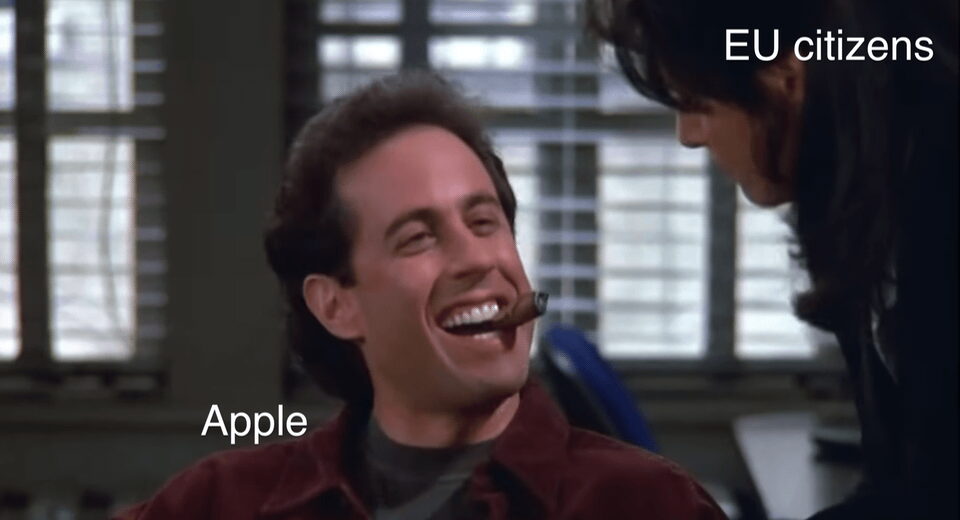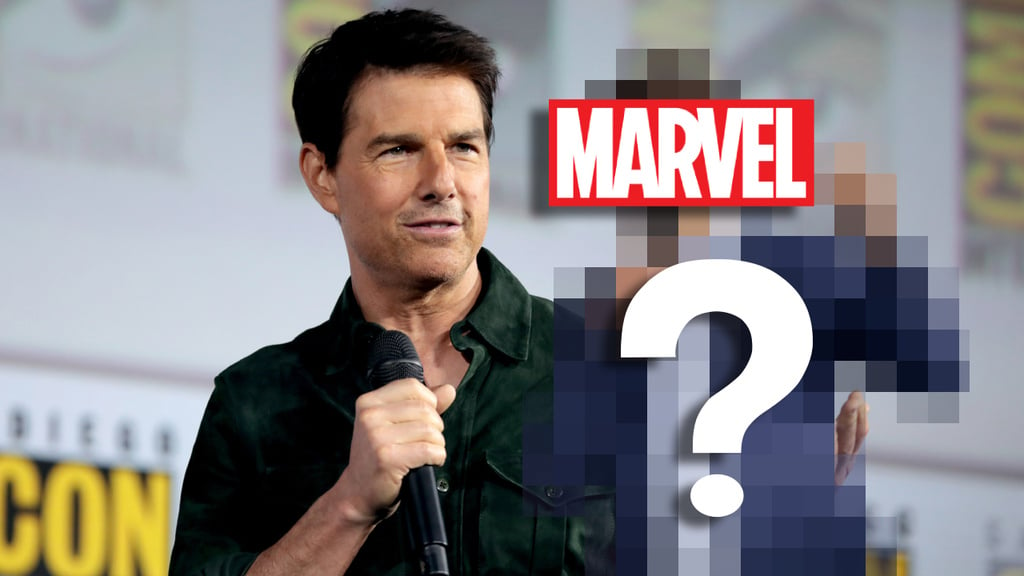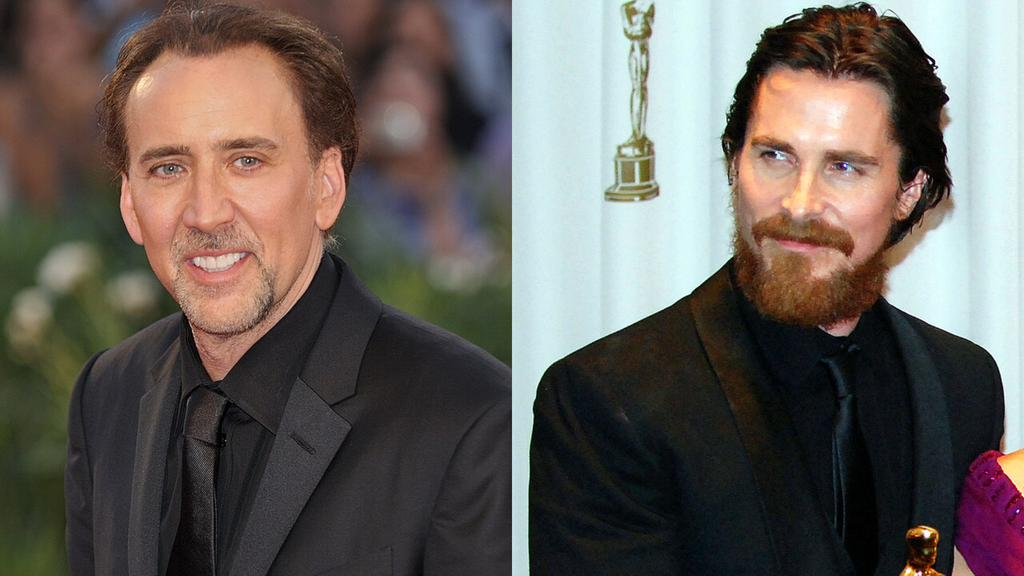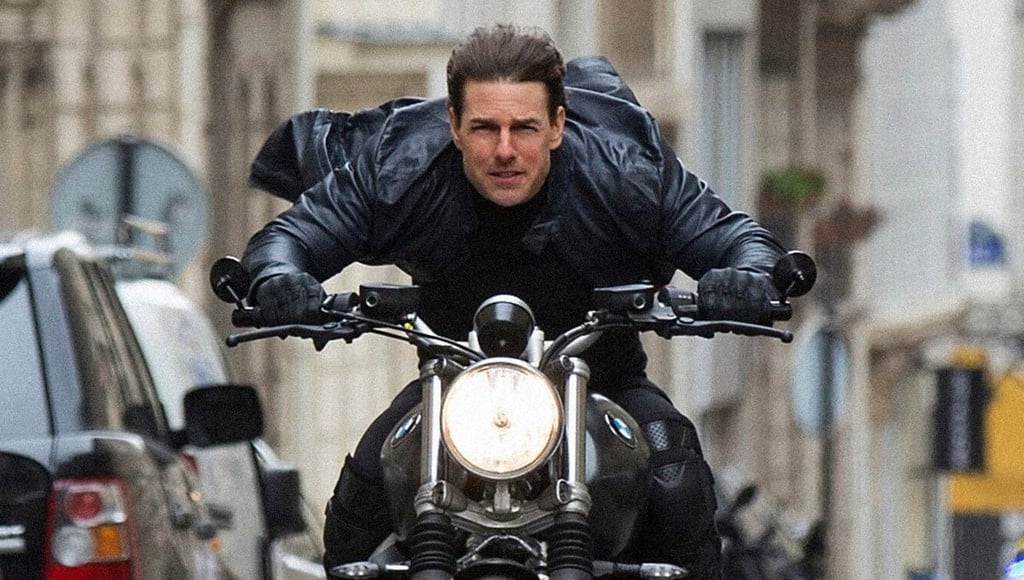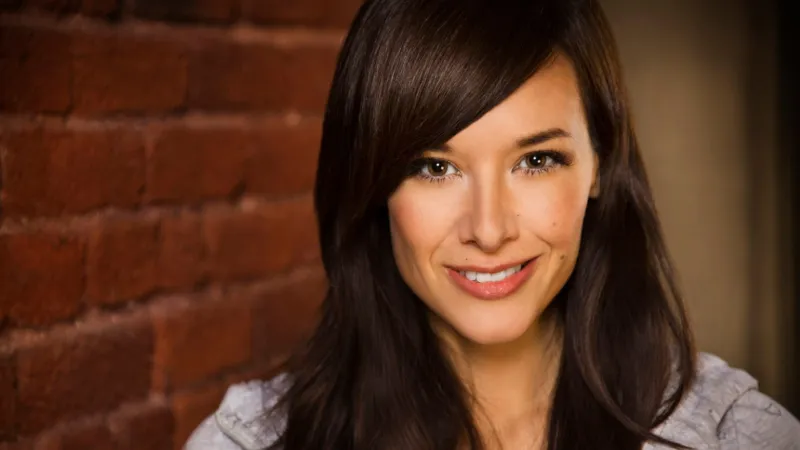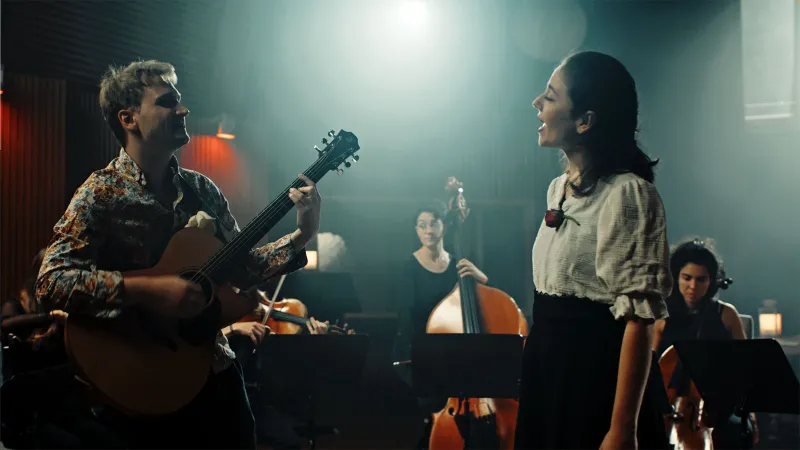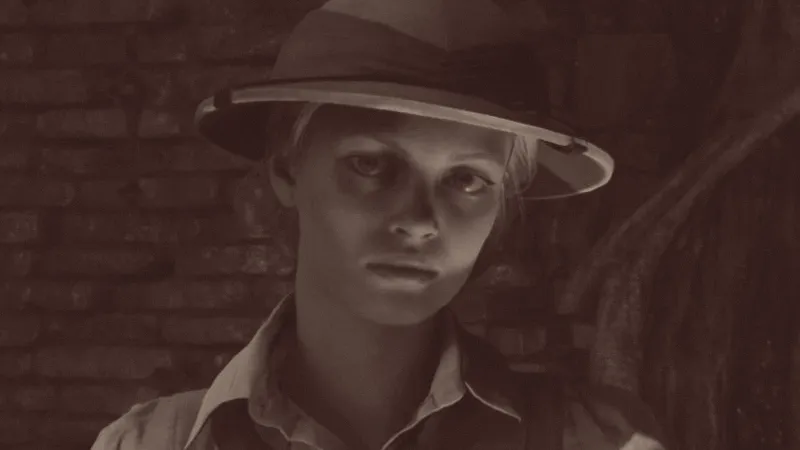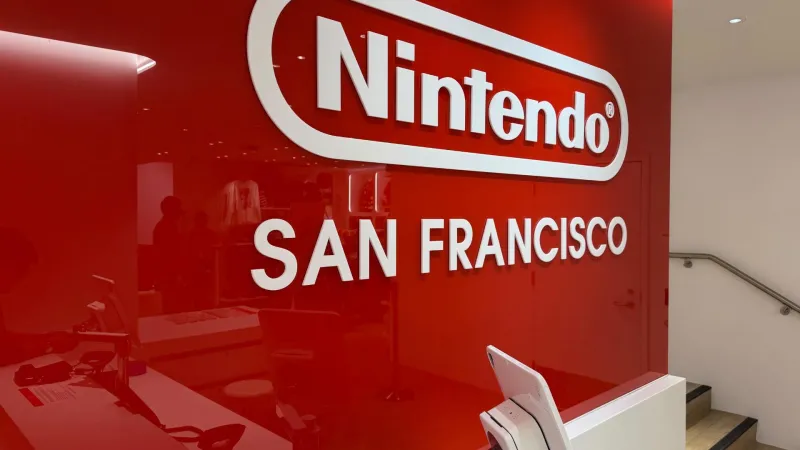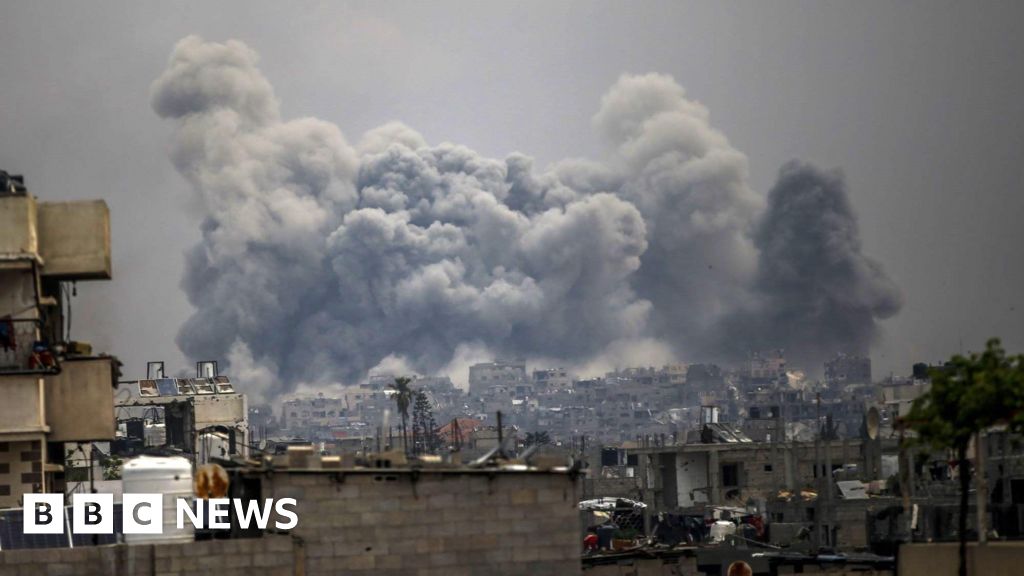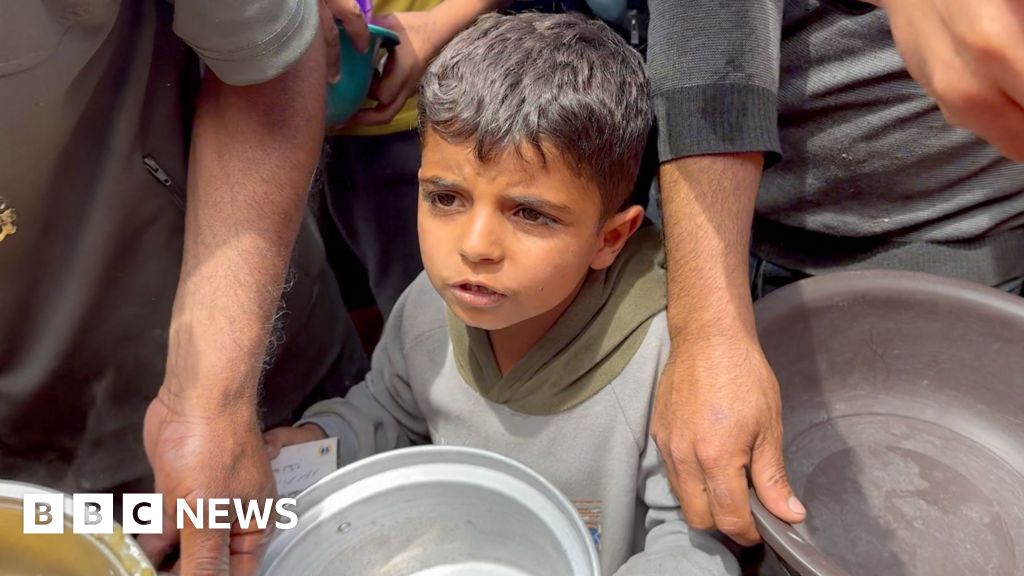How Father Bob Became Pope Leo


Father Robert Prevost told the Peruvian soldiers to back off.
It was the mid-1990s, and the troops, armed to the teeth, had stopped and boarded a minibus carrying the American priest and a group of young Peruvian seminarians. The soldiers tried to forcibly recruit the men.
Citing a law that exempted clerics from military service, Father Prevost told the soldiers, “No, these young men are going to be priests, they cannot go to the barracks,” said the Rev. Ramiro Castillo, one of the seminarians in the van. “When he had to speak, he spoke.”
After years of internal violence, border tensions and political turmoil, Peru, under its authoritarian president, wanted more military muscle. In those days, Father Prevost and the seminarians traveled the country, re-enacting scenes, sometimes in costume as an insurgent or a soldier, to prompt conversations and help heal the country scarred by the bitter conflicts.
These were dramatizations of dramatic times that Father Prevost had lived through as a missionary who found his voice, in Peru. Now, as he takes over an often divided Roman Catholic Church and the most prominent pulpit on earth, his voice will be heard globally when authoritarianism is on the rise, technological leaps are disrupting society, and the most vulnerable are being threatened by conflicts, economic inequality and climate change.
A man with a foot in two continents and multiple languages, Pope Leo XIV brings to bear a résumé that got him the job, full of deep religious education, frontline pastoral work, global order management and top Vatican governance experience. He also had a powerful booster in Pope Francis, who, at the end of his life, urgently pushed the American’s career forward.
Throughout, Bob, as his American friends still call him, or Roberto, as his Spanish and Italian ones do, has remained consistently low-key, a gray man in a world of outsized personalities cloaked in sumptuous scarlet cassocks, an earnest admin of the apostles. His spiritual training has taught him to step back and make more room for others, while putting the faith above all else.
He has recognized that he will have to leave more of himself behind as he takes on the burden of leading the world’s 1.4 billion Catholics.
On Tuesday, Leo sneaked into the headquarters of his Augustinian order right off St. Peter’s Square. Over carbonara pasta, he listened as his friends, choked up, told him the church’s gain had created a void in their chapel and dining hall.
“I see one has to give up many things,” he said at the lunch, according to the Rev. Alejandro Moral Antón, an old friend in the room.
After he finished, Leo, whose greatest pleasure was driving hours on dusty open roads, or across American highways, or over European borders, climbed into the back of a black Volkswagen Tiguan SUV for a few-hundred-feet ride back to the Vatican, surrounded by security, mobbed by crowds and hounded by reporters.
A Spiritual Education
Bob Prevost was not sure what to do. For years, he seemed destined for the priesthood. He grew up in a deeply Catholic family outside Chicago’s South Side, where his friends and teachers in elementary school felt he had the calling. Even the old woman across the street told him, when he was only an elementary school boy, that she thought he would be the first American pope.
He had left his parents and brothers around age 14 to enter a junior seminary about two hours away in the Michigan woods. There, he prepared for a prayerful life, ultimately at Villanova University, a citadel of Augustinian education outside Philadelphia.
But back then, when all seemed certain, he revealed his doubts to his father.
“Maybe it would be better I leave this life and get married; I want to have children, a normal life,” the future pope, in a 2024 interview on Italian television, recalled saying. His father responded, he said, in a very human but deep way, telling his youngest son that, yes, “the intimacy between him and my mom” was important, but so was the intimacy between a priest and the love of God.
“There’s something,” then-Cardinal Prevost recalled thinking, “to listen to here.”
The conversation eased the conscience of Prevost, then a young and deeply spiritual man with a fondness for striped trousers, St. Augustine and math equations. His years as a boy in Chicago who adored the White Sox, as a precocious boarding school student in Michigan and as a Villanova Wildcat with long sideburns and a deep side part amounted to the spiritual education of a future pope in which he trained to develop an interior life that resisted worldly temptations, especially material and physical pleasure.
The learning started early. His local Catholic school and parish church, where his family sat in the same pew every Sunday and his mother sang “Ave Maria,” became a Catholic cocoon.
After only the eighth grade, he ventured out of his tight-knit community to attend St. Augustine Seminary High School near Holland, Mich., a boarding school for boys exploring a life in the priesthood. Spread over hundreds of acres of forest along the Lake Michigan shoreline, students played sports and tobogganed through snowdrifts.
Prevost sang in the choir and edited and oversaw the budgeting of the school’s yearbook, “The Encounter,” which won a certificate in Columbia University’s yearbook contest. He was recognized as a top “discussion leader” at a “spring discussion festival,” and performed in the “Gaudeamus” — Latin for “let us therefore rejoice” — skits, including one in which he played Julius Caesar about to be stabbed by Brutus.
The students received only occasional visits from their families, but they went home for Christmas break, when, classmates said, Prevost got odd jobs in a plumbing parts warehouse, packaging spouts and faucets. The class of potential priests whittled down over the years — some got girlfriends, others got homesick and others lost their calling. In the end, only 13 out of several dozen, including Prevost, made it to graduation.
He had expected to attend an Illinois seminary for Augustinians, but it folded, so he instead went to Villanova, in 1973. He majored in math and attended Masses that were sometimes interrupted by shouts of “Hoagie Man!” when a guy selling subs passed by. Prevost and the others on the priesthood track lived together on campus in a wing of St. Mary’s Hall, where they mostly got along with the other students.
“There were a couple of ugly incidents,” said the Rev. Tony Pizzo, who was a year behind Prevost at the school, and is now the head of the Augustinian order in the Midwest, “where a couple guys from the other part of the dorm were funny.”
“They just did some nasty things,” he said, noting they dumped garbage in the hallway where he and Prevost lived. “We wake up in the morning, and there’d be crap all over the place.”
Those were distractions from what really mattered: developing an inner life. Father Pizzo said the tight-knit group discussed the works of Karl Rahner, a Jesuit theologian critical of rigid church doctrine and a monarchical view of the papacy. Rahner’s ideas, including empowering local bishops, were important for the Second Vatican Council, which introduced changes that modernized the church, and for the development of liberation theology, which applied the Gospel to real-world problems, particularly in Latin America.
Prevost gained a reputation as one of the brainier students, taking Hebrew and Latin even though he was not majoring in Scripture. (“Bob, it’s like, really?” said Father Pizzo.) He read a ton of St. Augustine.
He became steeped in the Augustinian emphasis on friendship and community, but also did not separate himself from the outside world. After speaking with his father and formally entering the Order of St. Augustine to prepare for the priesthood, he pursued his Master of Divinity at Chicago’s Catholic Theological Union. It was an institution with an ecumenical spirit physically and ideologically close to other divinity schools, allowing for students from different traditions to share ideas.
Protests and debates over hot-button issues, like the ordination of women as priests, roiled the campus, but classmates remembered Prevost as reserved and hard to read, except in his obvious commitment to the downtrodden.
He and his close friend the Rev. Robert Dodaro — since high school, they came to be known “as the two Bobs” — worked with alcoholics and addicts, and Prevost, who drove a stick-shift Ford, went to hospitals and bars to respond to people in need. He showed up when his friends in the order lost loved ones and became a dependable sounding board.
Father Pizzo recalled that during one bitter Chicago winter, he had had holes in his shoes as he walked through the snow and slush, but his superior, citing the order’s vow of poverty, doubted whether he needed new ones.
Father Pizzo turned to Prevost. “He said, ‘What are you talking about?’” he recalled, adding that the future pope gave him practical advice and told him to buy shoes and give the superior the receipt. “He says, ‘Our vow of poverty doesn’t mean we live in abject poverty. That’s not what it means.’”
Going to Rome in 1982, Prevost rounded out his formal education and expanded his view of the global church at the Pontifical University of St. Thomas Aquinas, known as the Angelicum. There, he was ordained as a priest, studied for a doctorate in the canon laws that govern the church, and moved for the first time into the Augustinian order’s house, playing tennis and table tennis, and participating in at least one peace march during the Cold War with Augustinians from around the world.
The Rev. Giuseppe Pagano, who lived in the house, recalled the future pope improving his Italian by reading the 19th-century Italian classic novel “The Betrothed,” but also by watching Italy’s Sanremo song competition and singing Neapolitan folk songs on long car rides.
The Rev. Paul Galetto, another housemate, remembered how Prevost used his new Italian to assure an angry Roman traffic cop that his driving the wrong way was an error, and in no way a lack of respect.
Pastoral Politics
Father Prevost was still working on his doctoral thesis in 1985 when he moved to Peru as a young missionary and priest in the country’s remote northern reaches.
“There is no room in Augustine’s concept of authority for one who is self-seeking and in search of power over others,” he wrote in his thesis. For more than a decade in Peru, he put his ideas about the faith into action.
Fresh out of his pontifical grad school, he had answered the call of an Augustinian bishop who needed an expert in canon law to set up the new chancery, or administrative office, of the church. He would later lead a project to develop Peruvian priests, driving up and down the coast.
Along the way, he found poor people in desperate need of help and a country ravaged by violence and tensions. The Shining Path, a Maoist guerrilla insurgency, was targeting the Catholic Church as part of its campaign of bombings, beheadings and political assassinations.
They killed and abducted nuns and priests and blew up churches. Another militant group tried to extort the Augustinians, threatening to bomb their communal house unless they gave the guerrillas money, said the Rev. John Lydon, who lived with Prevost in an Augustinian community for nine years.
During his time there, Prevost mastered Spanish. He also emerged as a highly respected figure in the Peruvian church, said the Rev. Miquel Company, who survived after being shot in the head by the guerrillas. He was also beloved for his closeness to the people, his work feeding and finding jobs for the poor, and his welcoming of people displaced by the violence.
Male churchgoers at times escorted Prevost to guard against potential attacks, said Suiberto Vigo, 75, a community leader who worked closely with him. Some the priests would dress as civilians so they would not be identified, he said.
Prevost expanded the church’s reach to absorb a wave of displaced Peruvians escaping the poverty and violence. He washed the feet of the faithful in a shack with a dirt floor, wore jeans and spoke plainly.
His homilies were unusually direct. “He’d say that a homily should be short and to the point, like a miniskirt,” said Elsa Ocampo, 81, a volunteer at the Our Lady of Montserrat church in Trujillo.
As threats from insurgents faded, crackdowns by an authoritarian government surged.
After the Peruvian president at the time, Alberto Fujimori, dissolved Congress and showed little regard for human rights ahead of his re-election in 1995, Prevost and others in the Augustinian community started taking part in demonstrations, carrying signs that read, “If you want peace, work for justice,” Father Lydon, who lived with Prevost in the Augustinian community, said, referring to Pope Paul VI.
They organized a concert in the main square of Trujillo to honor the victims of violence committed by both guerrillas and government death squads. A band of seminarians played a protest song about the 1992 massacre of university students whose remains had been given to their families in milk boxes.
Prevost emerged as a voice against authoritarian abuses, including convictions without due process, for which he sought pardons. “He had a deep grasp of Latin America’s reality,” said Diego García Sayán, a former justice minister in Peru.
By the late 1990s, the brainy student had reinvented himself as a courageous pastor in Peru, burnishing his credentials in the order. His families, old and new, intertwined.
His father, Louis, now a widower, stayed with him and the other Augustinians for more than a month in their rectory, cooking meals and participating in the fraternal life.
“He was so proud of his son” and his life as a priest, said Bishop Daniel Turley, who lived there.
Globe-Spanning Diplomacy
After getting elected to head his order worldwide in 2001, Father Prevost was back in the St. Monica college outside St. Peter’s Square in Rome where had lived during graduate school. He ate with the young priests; worked on his tennis game on the hardcourt at the top of the college’s winding path, with a view of St. Peter’s Basilica; and got up early for long walks.
He spent much of his time on the road, overseeing all of the world’s Augustinian priests and communities.
The future pope, who as a college student had piled his friends in the car at 2 a.m. and drove 13 hours to Chicago from Villanova, liked the long, lonely drives from Brisbane to Sydney in Australia. Instead of a quick flight to Spain, he drove all the way from Rome, crossing through France and sleeping in roadside hotels. When he traveled to Germany, he made stops in the footsteps of Martin Luther, an Augustinian who left the order and the church and sparked Protestantism.
He served 12 years and two terms as the leader of a global church order with thousands of members, weighing in on issues facing Catholics everywhere. He warned Catholics not to be distracted from their faith by the “spectacle” of social media or by a “homosexual lifestyle” that went against church teachings, later saying his views on a welcoming church were evolving while doctrine remained the same. He spoke in Africa about alleviating poverty, in Asia about increasing vocations, in the United States about interfaith relations and in England about the need for a modern church to respond to “accusations of sexual abuse.”
He went to every corner of the earth, sometimes multiple times. He deepened his diplomatic skills and connections in the church; his understanding of the cultures and political climates where his order operated; and the finances, foundations and grants required to keep church activities funded.
In Nigeria, he wore voluminous robes and a cap; in Kenya, he became emotional as children at a new school built by the order gave him a gift; in India, he surprised the local priests as an easygoing leader who talked to them in simple language so he could be understood, and who was most interested in how they were doing.
He made a point during his travels to eat the local food, like balut, a fertilized duck egg, in the Philippines that he said took him “three days to digest.” He would eat anything — he was “not picky,” said the Rev. Luciano De Michieli, who traveled with Prevost for years. And whenever he could, he drove.
“He is good” to travel with, said Father Moral Antón, the prior general of the Order of St. Augustine. “Because he doesn’t talk much.”
Traveling the world, he made one especially important connection. In 2004, he visited Buenos Aires, where the church was led by Cardinal Archbishop Jorge Mario Bergoglio, the future Pope Francis, who celebrated a Mass.
As the Augustinian order’s leader, Prevost returned several times to Argentina, meeting with Cardinal Bergoglio. They were not entirely in sync.
When Francis was elected pope in 2013, Prevost told some of his fellow Augustinians, “Thank God, I’m never going to become bishop,” he recounted at an event years later, adding, “I’m not going to tell you the reason, but let’s just say that not all of my encounters with Cardinal Bergoglio ended in agreement.”
The same year, Prevost was about to leave his post after two full terms as head of the global Augustinians in Rome. He had traveled the world twice over, gotten to know bishops and cardinals, and prepared to return to Chicago.
He decided to invite Francis to celebrate a Mass with the Augustinian order, something popes did not usually do. “This pope is different,” Prevost told the Rev. Miguel Ángel Martín Juárez, the order’s secretary general in Rome at the time.
When Francis accepted, “Bob nearly fell over,” said the Rev. Anthony Banks, another Augustinian.
At the Mass, Father Prevost called the pope “a great gift” and praised his outreach to the faithful. And Francis, he later revealed in a speech, told him “to rest up.”
Not long after, in 2014, Francis instead sent him back to Peru, now as a bishop. He spent nearly a decade there, gaining crucial pastoral experience, winning election to a top position in the Peruvian Episcopal Conference and facing difficulties and criticisms common to church leaders, including over finances and handling sex-abuse accusations.
Some things did not change. As bishop in Chiclayo, he drove 12 hours down to the capital, Lima, to meet Cardinal Joseph W. Tobin, an old friend from the United States.
“I have this image of him covered with dust in a beat-up baseball cap,” Cardinal Tobin said. “I’m pretty sure it wasn’t the Cubs.”
The Vatican Fast Track
As Pope Francis began to get weaker, he started putting Bishop Prevost, whom he had paid special attention to, on a fast track.
“If I name Prevost as the head of the office for the bishops, how do you think he will do?” Father Moral Antón said Francis asked him in the library of the Vatican’s Apostolic Palace.
Father Moral Antón said he would do well.
“I also think he will,” Francis answered.
In 2023, Francis brought the American back to Rome to lead that office — which vetted candidates to become bishops — one of the most important ways to shape the future of the church. He increased his stature by making him a cardinal that same year.
“Prevost was a bishop according to the heart of Francis,” said Cardinal Michael Czerny, of Canada, one of Francis’ closest advisers. “He reflected his top concerns and values.”
As a cardinal, he continued to live in an apartment near the Vatican by himself, forgoing the usual nuns who help. He shopped and cooked for himself, and lunched with the young priests, busing their plates. He got in the occasional match of tennis. “I play because it helps me,” he told Father Moral Antón, his successor as the head of the world’s Augustinians.
His new position gave him valuable experience as a power player in the Vatican, where he survived and excelled in the snake-pit of Rome. Unwaveringly prepared, collegial, sharp and measured, Prevost impressed as an uber bureaucrat.
Members of the Vatican office for bishops said he made a point to greet the members who often met around a long rectangle table in the Sala Bologna, frescoed with Renaissance city maps, and listened carefully to the documentation on all of the candidates. He surveyed all members with a forensic approach and, when people droned on, had a way of moving things along without the offenders even noticing.
“Once, when we were studying a candidate, he said, ‘A bishop can never get angry,’ and I realized that he never gets angry,” said Maria Lia Zervino, one of three women who is part of the church’s bishops office, saying that he had vision and patience, and that he was “deeply spiritual.”
Francis increased Prevost’s footprint and made him a formal member of the Pontifical Commission for Latin America, increasing his South American bona fides, and of other important Vatican departments. He also took Prevost along on some of his last papal trips.
When Francis prioritized Synod meetings, in which bishops and cardinals from around the world gathered to discuss the direction of the church, he made sure to let his admin star shine. At tables organized by language groups, Prevost spent two weeks with the English speakers, and then, two weeks with the Spanish speakers. Some of the cardinals he met said they did not realize he was American.
“No doubt he was the one who spoke the least at the table,” said José Manuel de Urquidi, a Catholic layman who sat at a table with Prevost and noticed his plain black messenger bag and his precision, often invoking specific codes in canon law to back up arguments.
Others marveled at his multitasking. “From time to time, he would dash out for one or two appointments and then come back,” said Archbishop Andrew Nkea Fuanya of Bamenda, Cameroon.
This past Feb. 6, the day the Vatican announced Francis had bronchitis and would be restricting his activities, the pope made sure to get to one important task. Francis promoted Prevost to the highest order of cardinal, making him one of 13 cardinal bishops in a College of Cardinals with more than 250 members.
Father Banks said he texted his old boss after Francis died. “I think you’d make a great pope,” he said he wrote, “but I hope for your sake you’re not elected.”
The cardinal responded, Father Banks said, writing, “‘I’m an American, I can’t be elected.’”
He still promptly responds to friends. The pope sometimes signs messages Leo XIV — sometimes Bob.
What's Your Reaction?
 Like
0
Like
0
 Dislike
0
Dislike
0
 Love
0
Love
0
 Funny
0
Funny
0
 Angry
0
Angry
0
 Sad
0
Sad
0
 Wow
0
Wow
0
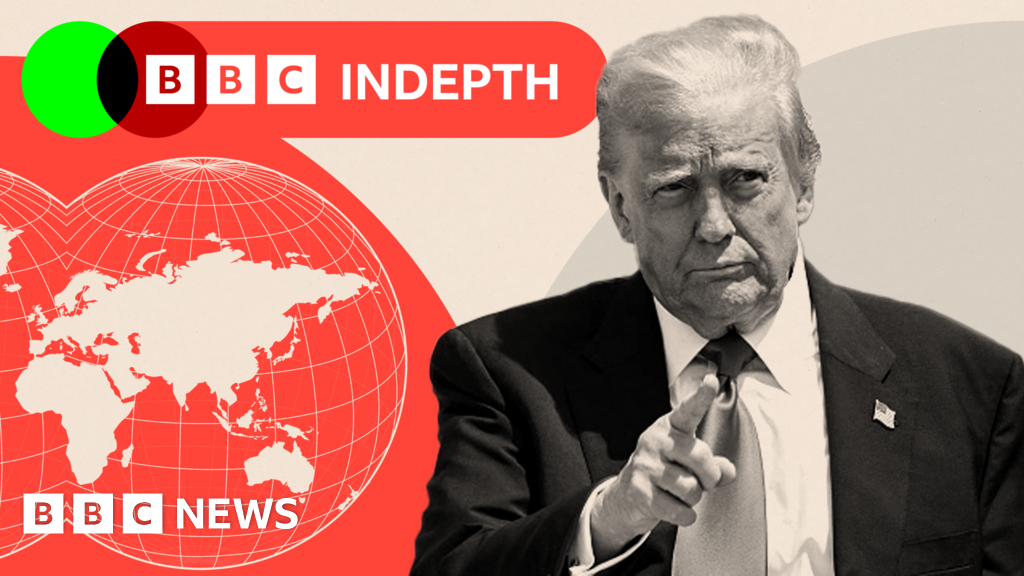
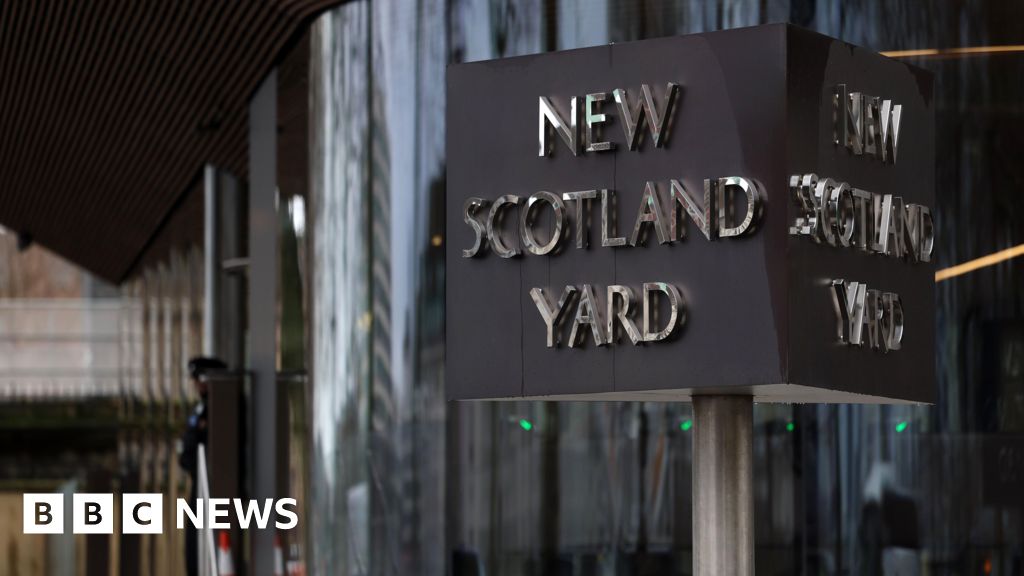

![Africa CEO Forum : énergie, IA, routes… les paris du continent [Business Africa]](http://static.euronews.com/articles/stories/09/27/46/96/640x360_cmsv2_01295edd-3441-5908-8c4e-adb7e75b9f71-9274696.jpg?1746786054#)
